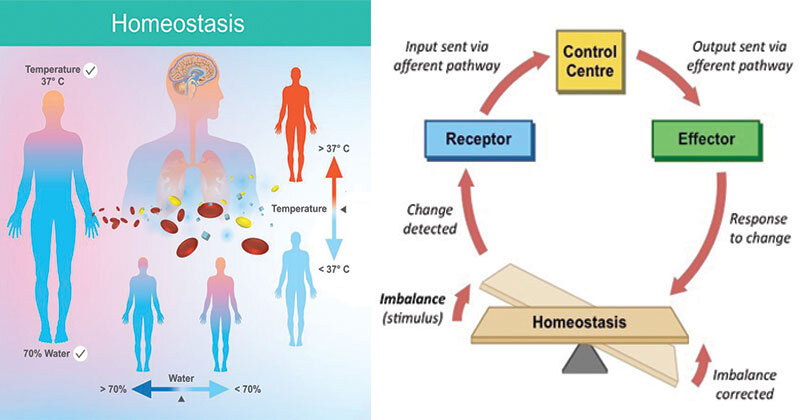Your Brain's Cortisol Control Hub
Need help with behaviors?
➡
Let's chat!
➡
Need help with behaviors? ➡ Let's chat! ➡
We’ve been going through the human brain journey for the past few weeks. I have LOVED sharing with you all about the pre-frontal cortex, limbic area and brainstem. And now, we are going to go just a bit deeper into the different parts of the limbic system.
We’ve already been through the two partners in crime - the amygdala and hippocampus. I call them “partners-in-crime” since they work very closely together in controlling emotional response and memory. Today, we arrive at the hypothalamus.
What is the hypothalamus?
I call it the Cortisol Control Hub (but we’ll get into that later).
It’s a very tiny part of the brain that makes up less than 1% of brain weight. It’s literally pea-sized. You’ll find it above the pituitary gland but below the thalamus. Discussions of the hypothalamus date back to the 2nd century AD. WHOA!
Regardless of its size, this tiny part is central to many bodily functions from regulating emotional responses to motor skills to blood pressure.
Functions of Hypothalamus
Its major functions rotate around two H’s:
Hormones (cortisol, oxytocin, and vasopressin)
Homeostasis (maintaining body equilibrium)
A series of processes have to take place for these functions to be achieved. Get ready for this wild ride!
The hypothalamus processes the sensory impulses received from body organs, such as the intestines, blood vessels, and stomach. Once that is done, it can now regulate the heart rate, bladder function, and food movement.
In addition to that, it serves as the point of interaction between the body’s central systems i.e. the endocrine and nervous system. It will detect changes in the body and stimulate the release of hormones from glands and organs. This results in the hypothalamus regulating several bodily processes.
Bet you never knew all that was going on inside your body to help keep you regulated!
1 - Emotion regulation
Hypothalamus is the key that turns our emotions into physical responses. Anger, excitement, fear, or stress are all responses generated in reaction to thoughts, impulses, or some stimuli in our surroundings. For instance, the hypothalamus makes your heart rate speed up when afraid.
I mentioned cortisol earlier, and this is where we’ll dive into it. This is the hormone released when you get stressed. Cortisol helps the body reduce inflammation and regulate metabolism. Basically, it’s responsible for putting you in a flight-or-fight mode. Your heart rate increases, the immune and digestive systems slow down, and your brain recognizes there is a “situation” going down.
The hypothalamus acts as the telephone to the adrenal glands. Hypothalamus secretes a hormone that goes through the pituitary glands which tell the adrenal glands to release cortisol. It’s also in charge of regulating the amount of cortisol to be released as too much or too little is harmful.....likely what many of us are experiencing, right now.
Too much cortisol means your hypothalamus is activated more than it should be, and you can suffer from chronic stress. So if you have a stressful situation later, you’ll keep releasing higher and higher levels of cortisol in order to have an appropriate stress response. This cycle can eventually lead to depression, anxiety disorders, heart disease, and other fun things no one wants. We want to keep that stress response baseline low.
The brain and stress have a complex relationship, but the good news is you’ve got some level of control. Before the situation gets to a critical volume, you can practice these emotion regulation tips. Or, do something that chills you out, and your brain will take care of the rest.
If you or your kiddo are still struggling, I suggest seeing a professional to help get that baseline back down. Their bread and butter is stress management. Literally.
2 - SLEEP REGULATION
Twilight - Darkness tells the body to release melatonin and induce sleep.
The hypothalamus has the suprachiasmatic nucleus (SCN) that’s commonly known as the circadian pacemaker. It is responsible for our sleep and wake cycles. It’s the entire reason why you should dim the lights as kiddos get closer and closer to sleeping time. By the way, that works with adults, too!
During the day / light cycle, it helps prevent melatonin secretion which is the hormone responsible for sleep. This keeps up awake during the day. However, as sunlight reduces, the SCN is inhibited and can no longer prevent the release of melatonin. As it gets dark, sleep is induced and melatonin is released.
Dysfunctions in this part will cause insomnia or other mood disorders.
3 - Temperature regulation
The optimal temperature for body processes to occur is 37°C (98.6°F). The hypothalamus often compares the body temperature to the ideal temperature and signals hormones to make the required adjustments to either raise or lower the temperature.
This is why it’s SO important to have room temperatures set between 68-73F. If too high or too low, the body will start to focus on regulating and won’t be available to focus on the task at hand.
4 - Eating regulation
Did you know the hypothalamus is responsible for eating, too?
Stomach + Hypothalamus = “Stop Eating”
When the stomach is full, a certain area of the hypothalamus is activated. A feeling of fullness is induced to prevent you from consuming more food. Studies have proven that damage to this part of the hypothalamus causes excessive eating which leads to obesity.
As we have seen, the hypothalamus performs several functions essential to the body 24/7. It may be pea-sized, but its importance can’t be overstated enough.
That wraps up our series on the brain!
We presented a whole lot of information, and some of it might be confusing. Let me know if I can help relate it to working with kiddos. I’m here to help.
Questions? Need help? Reach out!
Email: hello@thebehaviorhub.com
Social media: @thebehaviorhub
Online school
Schedule a discovery call










